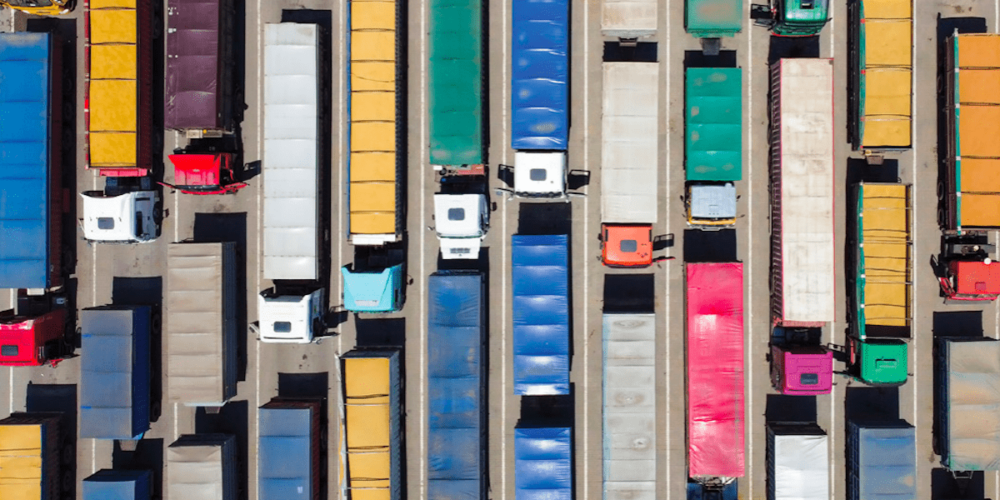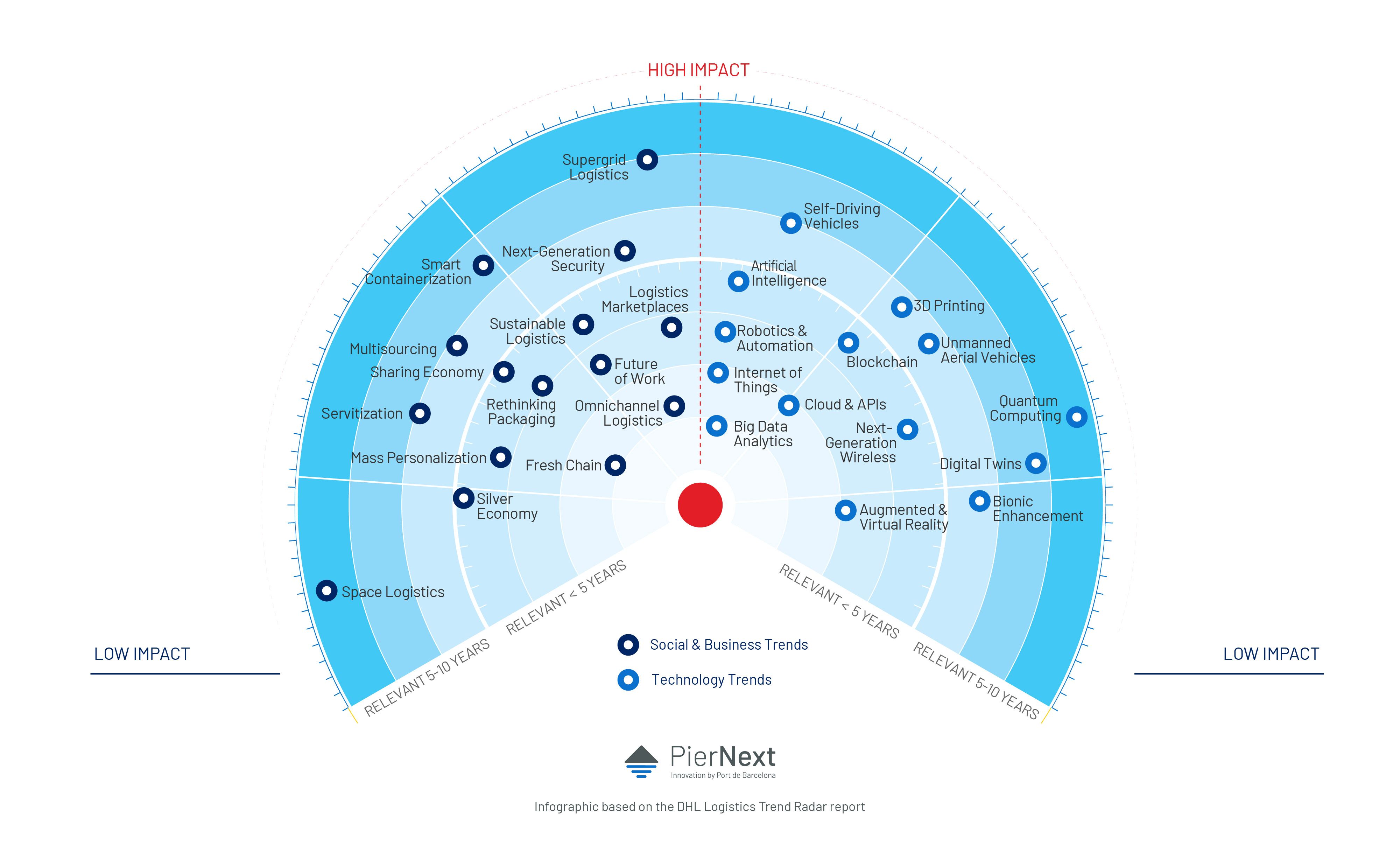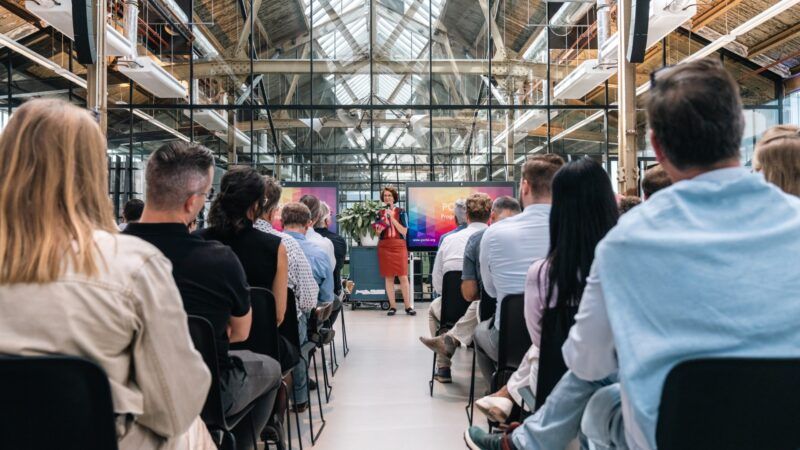 Online marketplaces help connect millions of shippers with a multitude of logistics providers around the world. (DHL)
Online marketplaces help connect millions of shippers with a multitude of logistics providers around the world. (DHL)
DHL Logistics Trend Radar: the future of logistics is today
The fifth edition of the DHL Logistics Trend Radar, a reference document for professionals in the logistics sector, analyzes the present and future of the industry, strongly impacted by COVID-19, which has accelerated the implementation of a series of transformations that will mark the future of the sector.
 Online marketplaces help connect millions of shippers with a multitude of logistics providers around the world. (DHL)
Online marketplaces help connect millions of shippers with a multitude of logistics providers around the world. (DHL)
Published biennially, the report prepared by the world's most important parcel company is a fundamental tool to anticipate the trends that will define the logistics sector in the short and midterm.
A giant leap
The first two decades of this century have witnessed a series of transformations in the logistics industry that have generated more changes than in the entire 20th century. The DHL report highlights, among others, the unstoppable emergence of e-commerce, which is based on a vertical business model that integrates logistics into its operations.
The barriers that prevent companies from moving online are rapidly falling, thanks to the appearance of the new generation of 3PV or third-party and the development of application programming interfaces (APIs) which allow organizations of all sizes to connect core supply chain IT platforms with virtually any other system.
This technological boost is the result of the huge investment made in the logistics sector: since 2012, venture capitalists have poured almost $30 billion into the logistics sector together with the birth of start-ups which innovate in the logistic sector.
Among the technologies that are being implemented, big data helps diagnose operations and predict future scenarios; Artificial Intelligence is used to solve the most complex operational challenges like dynamic route optimization and precise capacity and demand prediction, as well as intelligent physical automation.
2020-2030: the decade which will confirm the sector’s digitization
The volatility of globalization has been exposed by the coronavirus pandemic, especially in a sector such as logistics that has been in the front line. COVID-19 has acted as a catharsis to prove that the next decade will confirm the digitization of logistics, essential to minimize impacts such as those caused by the pandemic.
Although it is now practically a fact, its implementation has risen to the top of the priority agenda to protect organizations from disruptive events, according to 50% of the CFOs who responded to a PricewaterhouseCoopers survey.
The report highlights that COVID-19 has anticipated the prominent role that wearable devices, robotics or contactless devices are having in the new work protocols. They could potentially end up being more important that what was initially expected.
The next decade will witness the digitalization of logistics, imperative to minimize impacts like those caused by the pandemic
Resilient, Sustainable, and Future-Proof Supply Chains
Supply interruptions, a volatile demand or commercial wars impose the reconfiguration of companies’ supply chains, which, until now, have been based on a low cost strategy and a “Just in Time” model.
Managing risk with resilience is the first recommendation. The report cites the consulting firm PricewaterhouseCoopers that predicts a significant growth in the adoption of tools that automate the collection and analysis of supply chain data, essential to react more efficiently to fast-changing situations and of an uncertain nature. This requires qualified personnel to coordinate an effective response.
Furthermore, the operational difficulties experienced this year have highlighted the importance of strategies for diversifying sources across the supply chain and geographies to reduce single-source dependence.
Sustainability is another key aspect, as stated by 79% of institutional investors. Environmental commitments aimed at reducing emission volumes translate into a wider use of electric vehicles or the elimination of single-use plastics, an especially pressing issue due to the massive manufacturing of masks and gloves as preventive measures against COVID- 19.

Another issue highlighted by the report is efforts to minimize the impact of packaging, a claim demanded by regulators and customers. Consumer goods giant Procter & Gamble, for example, aims to make 100% of its packaging fully recyclable by 2030.
Another scenario is the preparation of the logistics chain for a technological future powered by people. Faster deliveries, higher quality of service, and clear communication are demands expected to be executed seamlessly. This is leading companies to explore a wide range of technologies such as robotics, the Internet of Things (IoT) or autonomous vehicles.
The report stresses that humans are in charge of designing, maintaining and improving supply chain operations, urging companies to design people-centered innovation policies, emphasizing the need to increase their workforce with trained personnel.
On the radar
This edition introduces a series of new trends that did not appear in previous editions and whose impact and relevance will be visible in the next five years. These are divided into two categories, technological and social and business trends, which in turn are classified according to their impact (high or low) and their temporal relevance (before or after five years).
- Multisourcing: As economic and political circumstances change, so too does the logistics industry. While the second half of the 20th century saw much reliance on Asia as a production center, advances in robotics and computing in the 21st century – combined with contemporary changes in government policies, workforce skills, and consumer demand – have now unlocked production in many global regions previously inaccessible or not considered. Furthermore, increasingly more frequent natural disasters call for the geo-diversification of supply chains.
- Next-generation security: Security and privacy are values already at the heart of the logistics industry, but recent technology has been misused to target, exploit, and disrupt supply chains around the world. To combat these 21st-century threats and further close older gaps, the trend of Next-Generation Security involves a new wave of security products and services which are smarter and more resilient
- Rethinking packaging: Packaging is one of the few components that is practically universal throughout the logistics industry, with numerous players along entire supply chains and often dictates how operations are performed at each step. Many industry leaders seek to automate, reduce waste, and explore reusable and cyclic models for their packaging, as well as adapt supply chain operations in suitable ways.
- Space logistics and quantum computing are the last two new trends. However, their impact is lower and will happen in the longer term. The first one mentions the investments by governments and companies to participate in the new ‘space race’, with satellite launches and the need to provide goods and products through Earth’s atmosphere. The second one, whose impact is predicted to happen in a decade’s time, mentions the emerging entry of quantum computing in more commercial sectors.

Finally, the report refers to other trends that were included in the last edition of the report but that, for different reasons, are no longer considered relevant such as Fair & Responsible Logistics or Low-cost Sensor Solutions.
Others have changed their name to adapt to more current concepts, such as Mass Personalization (previously called 'Batch Size One'), the Future of Work ('Digital Work') or Virtual Twins ('VirtualReality & Digital Twins').
Finally, other trends whose impact will occur in less than five years, before the rest of the trends, have been identified, such as Artificial Intelligence and blockchain.





